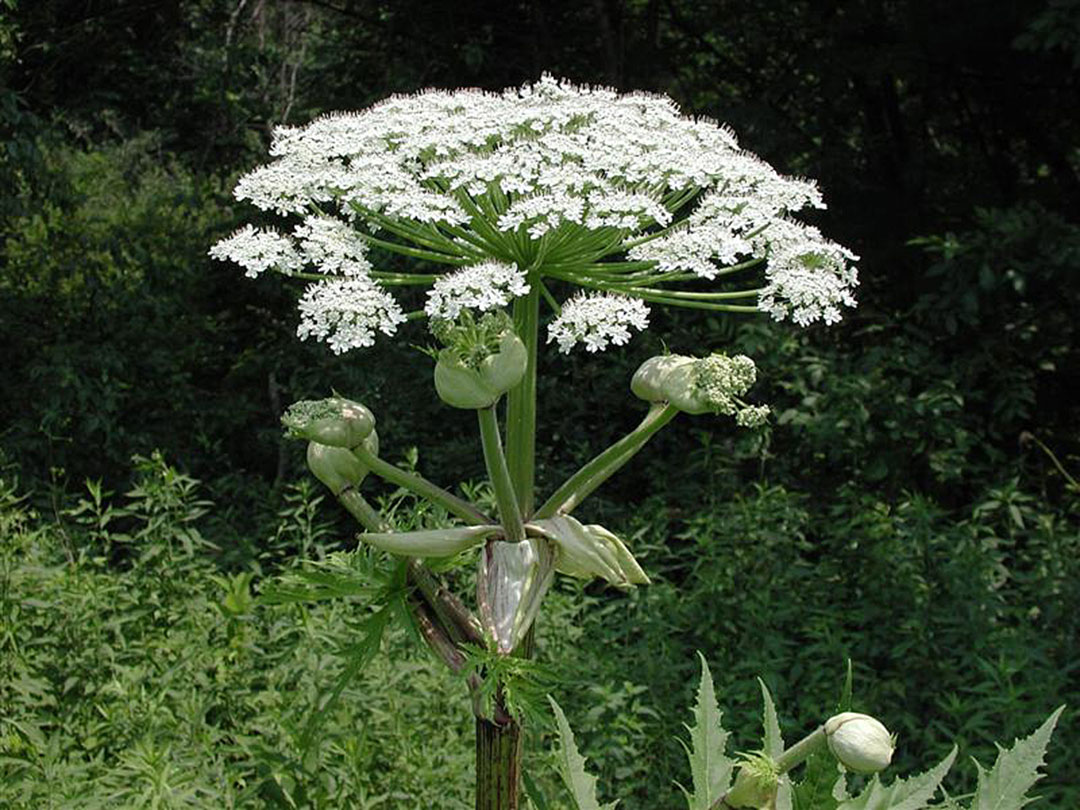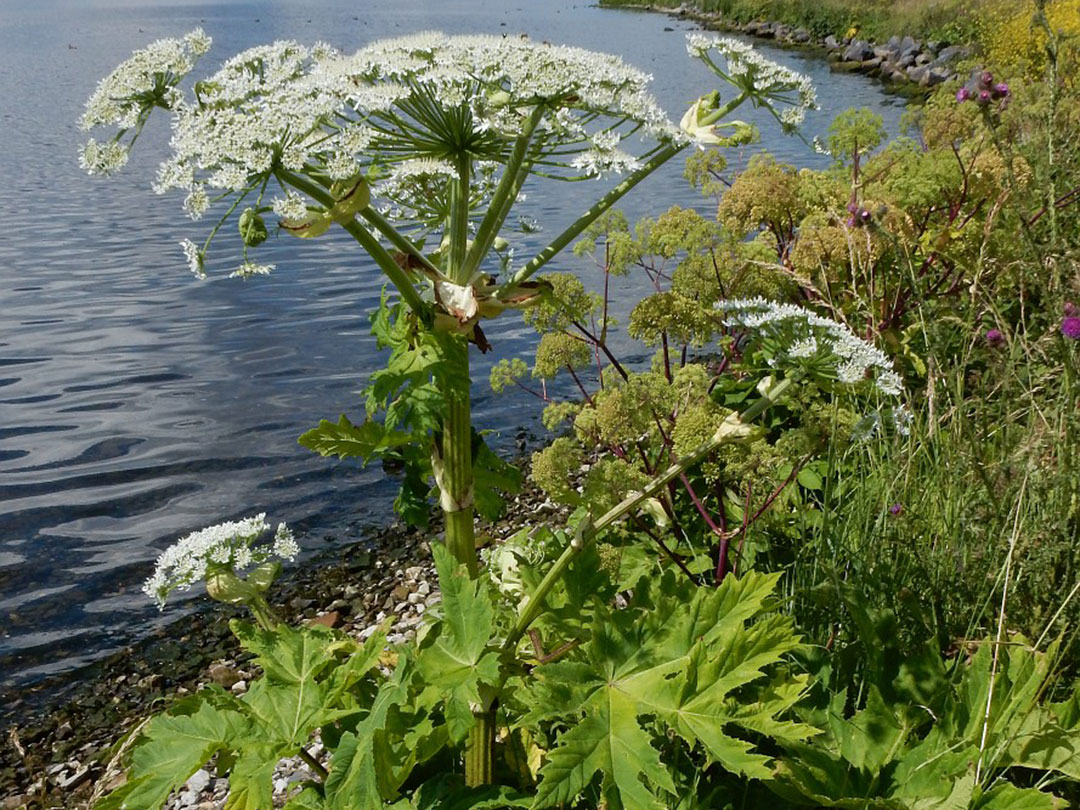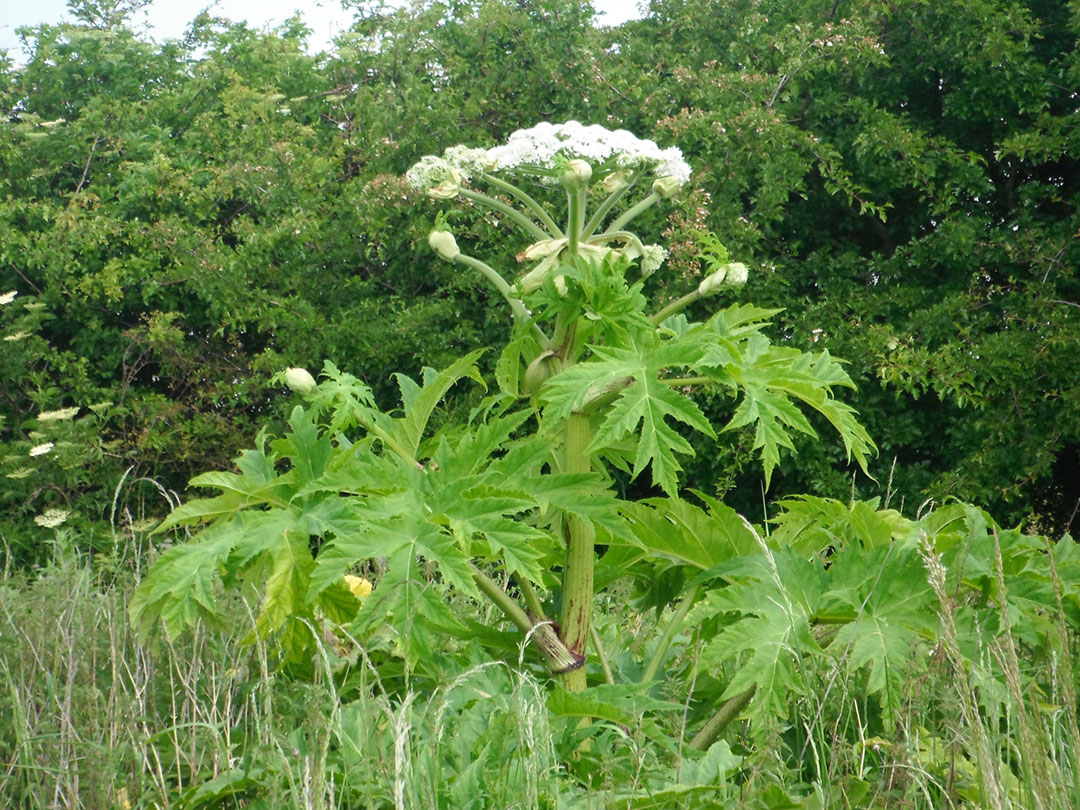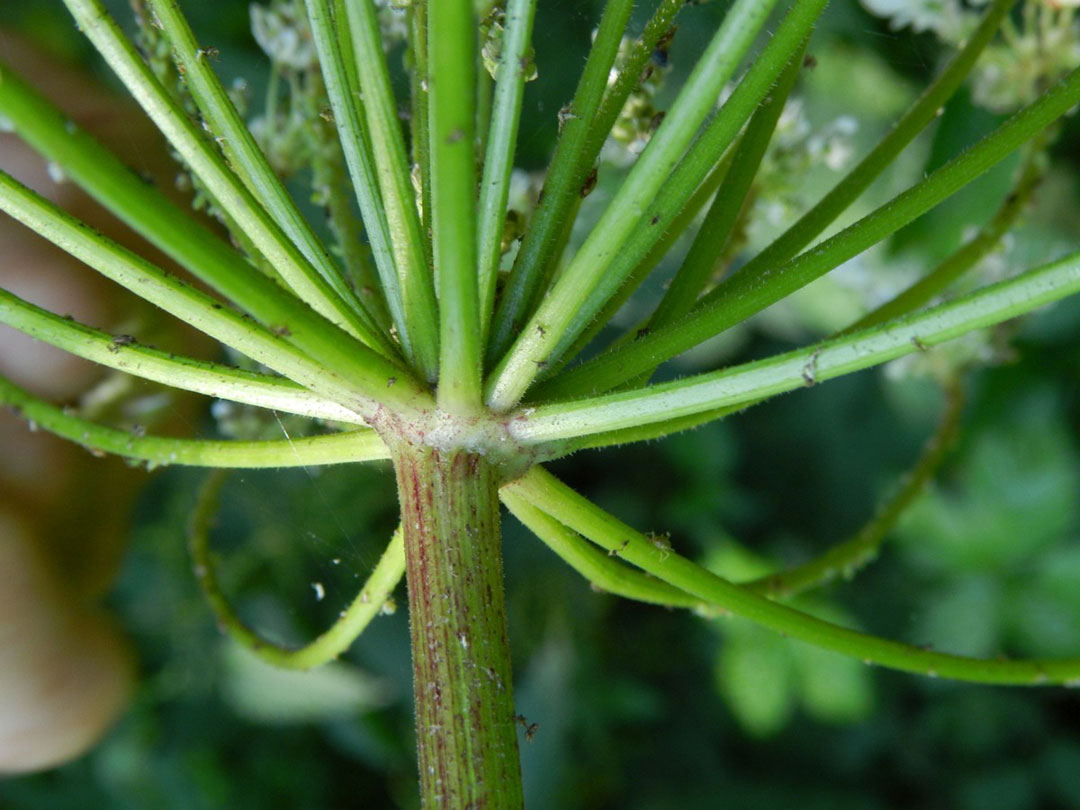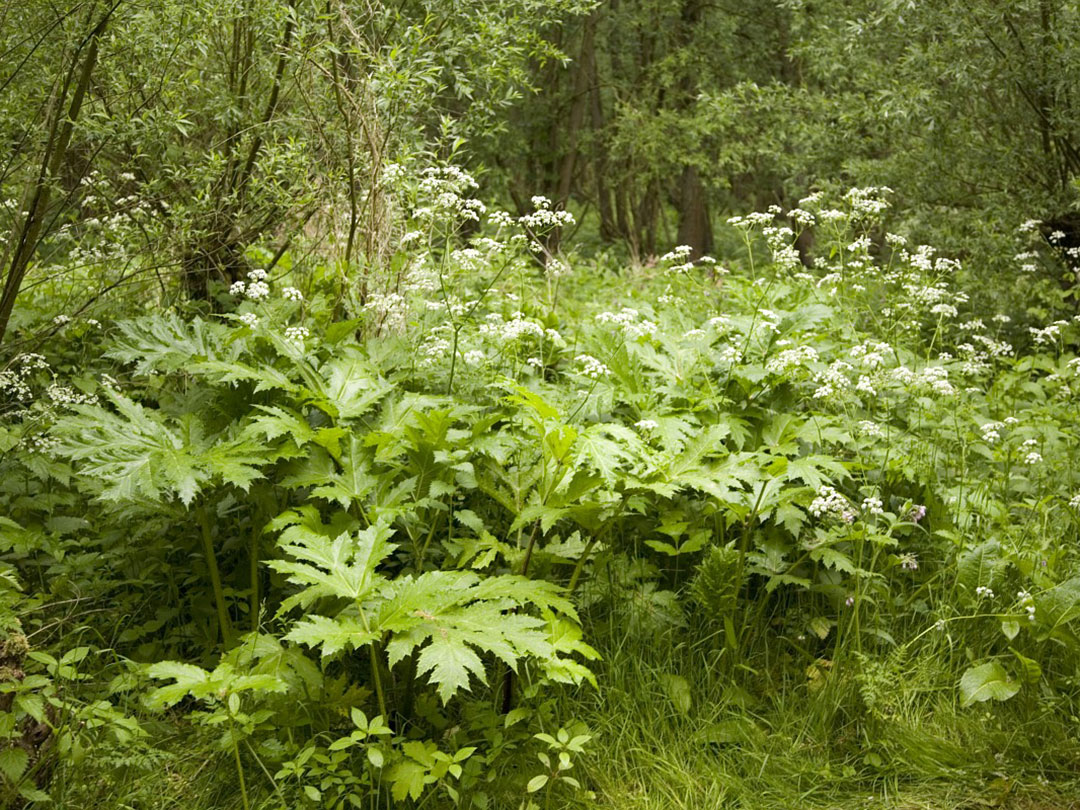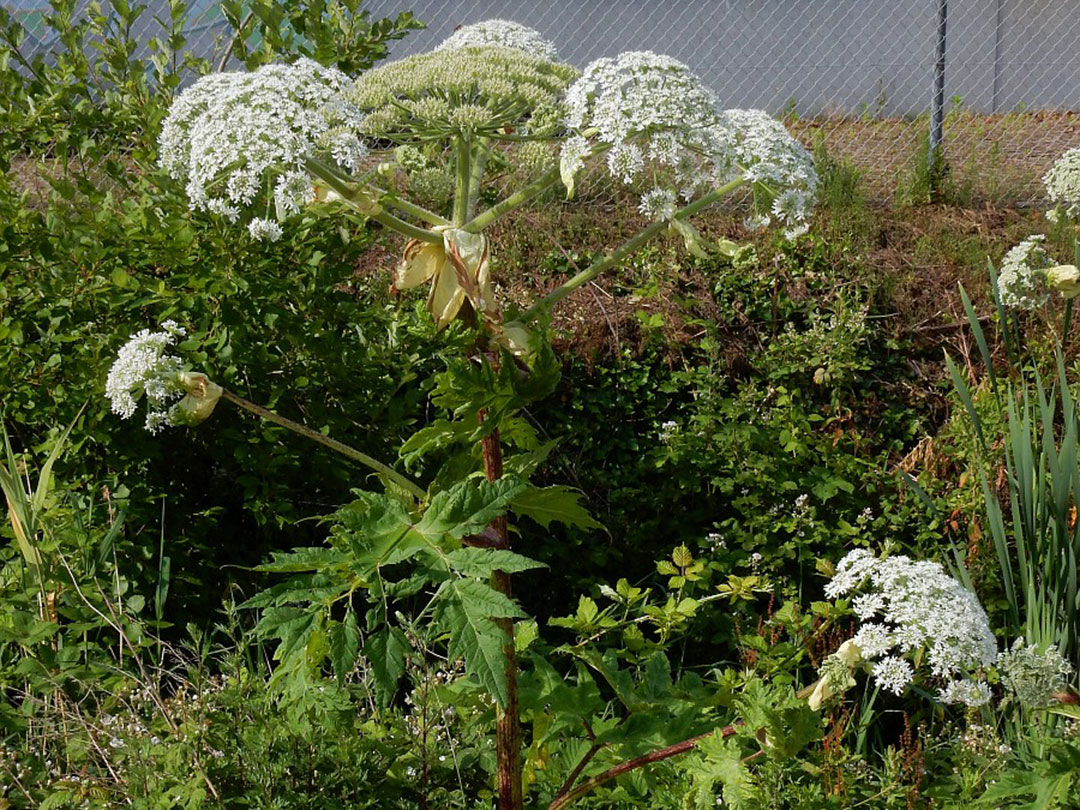Invasive Plant Details
Back to Full ListGiant Hogweed
Latin Name: Heracleum mantegazzianum
Identification
Flower: Large, white, umbrella-like flower clusters (umbels) that bloom from midsummer to fall.
Leaves: Huge, deeply lobed, and serrated leaves that can grow up to more than 1 meter wide.
Stems: Thick, hollow, ridged, and covered in coarse hairs with purple blotches, growing up to 5 meters tall.
Growing Environment: It is adapted to rich, damp soil and tolerates a wide range of light regimes. It grows on wet to moist disturbed sites at low elevations. It is often found along streams, wetlands, ditches, roads, rights-of-way and in agricultural areas, wooded ravines, vacant lots, and other disturbed sites.
Growth Habit: A biennial or perennial herb that grows rapidly to form towering plants with enormous leaves and flower clusters. It spreads through both seeds and underground rhizomes. In situ, giant hogweed appears as a massive, imposing plant that can dominate moist, disturbed habitats.
Impacts on Environment
Impacts: Highly invasive, particularly in moist, disturbed areas where it can spread rapidly.
Note: This plant is often confused with our native Cow Parsnip. Giant hogweed has large, very deeply lobed leaves with jagged edges (up to 2.5 metres long), whereas cow parsnip leaves are smaller (only 40 cm long), less lobed and less jagged, almost “maple-leaf” like.

